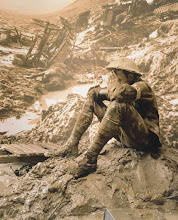On Sunday January 22 at 9:30 AM, a young man walked over to the payphones by the bus-stop at the the Beit Lid junction. Without warning he collapsed and began moaning in pain. A small crowd of soldiers, among the hundreds waiting for the bus to our nearby base, gathered around the fallen man. As a young soldier asked what was wrong, the man on the ground reached into his bag and set off a tremendous explosion.
An awful silence followed the overwhelming noise. And then the otherworldly quiet was broken by cries of pain, tears of rage and the sirens of approaching medical vehicles. Emergency crews had no sooner begun to tend to the wounded when another man standing at the exact site of the first bomb detonated a second blast.
Twenty-one young men and women, none older than me, were torn from this world in the space of five minutes.
The Beit Lid Massacre, as the attack was called, introduced a new reign of suicide bombings into Israel. A devastated Yitzchak Rabin suspended talks with the Palestinians. A murderous sect known as the Islamic Jihad shot to public attention. And off in distant Minneapolis, a ten-year-old boy read the front page story with little idea how familiar he would one day be with the junction at Beit Lid.
For the fifteenth year since the tragic double terrorist attack in Beit Lid, a memorial ceremony was held on my base. Families of the slain, senior officers and a select number of conscripts from my unit were in attendance. After a brief yet moving ceremony, a few extra videos were shown celebrating the recent accomplishments of the Paratrooper Brigade. While the ceremony failed to instill me with any semblance of brigade pride, I was struck by how much this tragedy is now a part of my life. The past merges with my current Sunday morning commute to transform a previously isolated corner of this land into something of almost sacred significance.
Thursday, January 27, 2011
Subscribe to:
Post Comments (Atom)




No comments:
Post a Comment